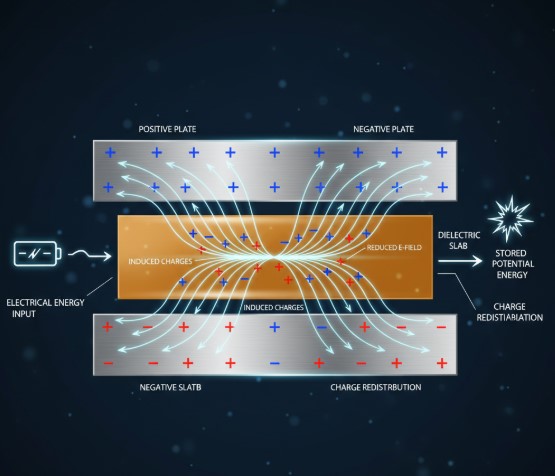Introduction to the Solar System
The solar system is a vast and intricate system comprising the Sun, eight major planets, their moons, dwarf planets, asteroids, comets, and other celestial bodies. At the center of this system lies the Sun, a gigantic ball of gas that generates energy through nuclear fusion, providing warmth and light essential for life on Earth. The gravitational pull of the Sun holds the entire solar system together, dictating the orbits of all its components.
The eight primary planets are categorized into two groups: terrestrial planets, which include Mercury, Venus, Earth, and Mars—rocky bodies with solid surfaces—and gas giants, consisting of Jupiter and Saturn, alongside ice giants, such as Uranus and Neptune. Each planet exhibits unique characteristics, from the scorching temperatures of Mercury due to its proximity to the Sun to the frigid, windswept atmospheres of the outer planets. In addition to these planets, numerous moons, which orbit the planets, showcase a diverse range of geological features and potential for hosting life.
The solar system also houses smaller celestial objects like asteroids, primarily located in the asteroid belt between Mars and Jupiter, and comets, which originate from the Kuiper Belt and beyond. The Kuiper Belt is a region filled with icy bodies that extends beyond Neptune, representing remnants from the solar system’s formation. Understanding the structure of the solar system is crucial for grasping planetary formation and dynamics, as it offers insights into the processes that shaped not only our own celestial neighborhood but potentially other star systems as well.
The exploration of the solar system has rapidly advanced with the advent of modern technology. Space missions conducted by various space agencies, such as NASA and ESA, have provided invaluable data regarding planetary atmospheres, surface compositions, and potential habitability. These exploration methods, ranging from flybys and orbiters to landers and rovers, have significantly enhanced our knowledge, paving the way for further research into the mysteries of our cosmic surroundings.
Formation of the Solar System
The formation of the solar system is a complex process that can be primarily explained by the nebular hypothesis. This widely endorsed theory suggests that around 4.6 billion years ago, the solar system emerged from a large, rotating cloud of gas and dust known as the solar nebula. Initially, this cloud consisted predominantly of hydrogen and helium, along with other heavier elements that had been produced in previous generations of stars. As this nebula began to collapse under its own gravity, it spun faster and flattened into a disk-like structure.
At the center of this disk, most of the material accumulated, leading to the formation of the Sun. The immense gravitational forces generated within this condensing mass triggered nuclear fusion reactions, igniting the Sun and marking the birth of our solar system. Meanwhile, the remaining gas and dust particles in the outer regions of the disk began to coalesce, forming small solid bodies known as planetesimals. Through repeated collisions and accretions, these planetesimals gradually built up larger protoplanets.
As the protoplanets continued to grow, they evolved into distinct celestial bodies. The terrestrial planets, such as Earth and Mars, formed closer to the Sun where the heat was intense enough to prevent the accumulation of lighter gases. Conversely, Jupiter and Saturn, classified as gas giants, were formed in the cooler outer regions, allowing them to capture and retain significant amounts of gas. This critical differentiation in composition was essential in establishing the differences between terrestrial and gas giant planets. The gravitational forces at play throughout these processes not only influenced the formation of the planets but also shaped their orbits, a fundamental aspect that continues to govern planetary dynamics to this day.
Structure of the Solar System
The solar system is organized into a complex architecture comprising the Sun, eight major planets, numerous dwarf planets, moons, and a variety of smaller celestial bodies. Centrally located, the Sun accounts for about 99.86% of the solar system’s total mass, establishing a gravitational anchor around which all other entities revolve. The planets are divided into two distinct categories: the terrestrial planets and the gas giants. The four inner planets—Mercury, Venus, Earth, and Mars—are characterized by their solid surfaces and relatively high densities. These planets exhibit unique features; for instance, Earth is notable for its liquid water and life-sustaining atmosphere, while Mars possesses the largest volcano and canyon in the solar system.
In stark contrast, the four outer planets—Jupiter, Saturn, Uranus, and Neptune—are predominantly gaseous and significantly larger in size. Jupiter, the largest of them all, is famous for its Great Red Spot, a colossal storm that has persisted for centuries, as well as its extensive system of moons, including the notable Europa, which has a subsurface ocean believed to hold potential for extraterrestrial life. Saturn is renowned for its stunning ring system, composed of ice and rock particles. Uranus and Neptune, referred to as ice giants, contain higher concentrations of water, ammonia, and methane than their gas giant counterparts.
Beyond the major planets, the solar system includes the Kuiper Belt, a region filled with icy bodies and dwarf planets such as Pluto and Eris. Further out lies the Oort Cloud, which is thought to be the source of long-period comets. Surrounding the solar system is the heliosphere, a vast bubble created by the solar wind, providing an additional layer of protection from cosmic radiation. The intricate structural composition of our solar system indicates a diverse and dynamic environment, essential for understanding planetary formation and the possibility of life beyond Earth.
The Role of Space Exploration
Space exploration has revolutionized our understanding of the solar system and the universe at large. Various methods and technologies have been employed in this endeavor, spanning both crewed and uncrewed missions. Notable spacecraft, such as the Voyager probes and Mars rovers, have played pivotal roles in expanding our knowledge about celestial bodies and their characteristics. The Voyager program, launched in the 1970s, has provided invaluable data about the outer planets and continues to transmit information from beyond our solar system, revealing the vastness and mysteries of interstellar space.
Uncrewed missions have often paved the way for future exploration, gathering critical data while minimizing risk. The Hubble Space Telescope, for instance, has captured stunning images of distant galaxies and facilitated significant advances in astrophysics. Its ability to observe the universe in wavelengths invisible to the naked eye has provided insights into cosmic phenomena and the expansion of the universe. These telescopes and robotic missions have enhanced our understanding of planetary formation, atmospheric conditions, and the potential for life beyond Earth.
Crewing missions, exemplified by programs such as NASA’s Artemis or the International Space Station (ISS), emphasize human presence in space. They not only foster a deeper connection with our exploration efforts but also address the complexities of living and working in space environments. Through such missions, researchers aim to uncover the physiological effects of microgravity on humans and develop technologies that support long-duration space travel.
Nonetheless, space exploration is fraught with challenges, including funding limitations, technological hurdles, and the physical dangers posed to both crewed and uncrewed missions. Successfully overcoming these obstacles is crucial for the advancement of our knowledge of the solar system and the ongoing search for extraterrestrial life. As technology continues to evolve, the future of space exploration holds immense promise for unveiling the secrets of the cosmos.
Search for Life Beyond Earth
The quest for extraterrestrial life has captivated scientists and enthusiasts alike, driven by the question: Are we alone in the universe? Within our solar system, several locations are considered promising in this search, particularly Mars, the icy moons of Jupiter, and Saturn. These celestial bodies are the focus of ongoing research due to their potential for harboring conditions suitable for life.
Mars, once a planet rich in water, presents intriguing evidence of past environmental conditions that may have supported microbial life. Studies reveal ancient riverbeds and mineral deposits suggesting that Mars once had a climate similar to Earth. Current missions, such as NASA’s Perseverance rover, are primarily aimed at uncovering signs of past life through careful geological analysis and sample collection.
In addition to Martian exploration, the icy moons of Jupiter and Saturn offer compelling targets for astrobiological investigation. Europa, an ocean world buried beneath an icy shell, possesses subsurface liquid water that may provide a suitable habitat for life. The Europa Clipper mission, set to launch in the coming years, will investigate its surface and subsurface characteristics to assess its habitability. Similarly, Enceladus, with its geysers ejecting water vapor and organic compounds, has already delivered signs of an ocean beneath its icy crust, prompting further inquiries into its potential for life.
The search for life is not confined to our solar system; advances in exoplanet research have identified thousands of planets orbiting stars beyond our sun. The use of the Kepler Space Telescope and various other observational techniques allows scientists to identify exoplanets within the habitable zones of their stars, where conditions may support liquid water and, by extension, life.
Technologically, the pursuit of extraterrestrial life involves complex instruments capable of analyzing atmospheric compositions, surface chemistry, and other vital parameters that signify biological activity. Discovering life beyond Earth would revolutionize our understanding of biology, evolution, and humanity’s place in the cosmos, prompting profound philosophical and ethical discussions on the nature of life itself.
Potential Habitats in the Solar System
As we explore the solar system, numerous celestial bodies are emerging as potential habitats that could support life beyond Earth. The focus on Mars has intensified due to its geological history suggesting the presence of liquid water in its past. This is significant because water is a key ingredient for life as we know it. Various missions, such as NASA’s Perseverance rover, aim to analyze Martian soil and search for biosignatures that may indicate past microbial life. The discovery of ancient riverbeds and lake basins strengthens the case for Mars having once harbored conditions suitable for living organisms.
Moreover, the moons of Jupiter and Saturn have gained considerable attention. Europa, one of Jupiter’s largest moons, possesses a subsurface ocean beneath its icy crust. This ocean is believed to be in contact with the moon’s rocky mantle, creating a potential environment for chemical reactions necessary for life. Future missions like the Europa Clipper are anticipated to provide detailed reconnaissance of its ice shell and ocean. Enceladus, a moon of Saturn, also holds great potential due to its geysers that eject water vapor and organic materials into space. These plumes suggest that Enceladus has a subsurface ocean rich in nutrients, further positioning it as a prime candidate for potential life.
The exploration of these moons, along with ongoing research on Mars, could unlock new understanding about the conditions that sustain life and the processes that foster habitability. Both current and future missions seek to answer fundamental questions regarding the existence and nature of life within our solar system. As technology advances, the possibilities for discovery will expand, leading to exciting revelations that could profoundly impact our understanding of life beyond Earth.
The Future of Solar System Exploration
The future of solar system exploration is poised for significant advancements, as various space agencies and private entities undertake ambitious missions to deepen our understanding of celestial bodies. Notably, NASA and the European Space Agency (ESA) are at the forefront of these endeavors, planning missions that focus on both the Moon and Mars. NASA’s Artemis program aims to return humans to the lunar surface by 2025, with the ultimate goal of establishing a sustainable human presence. This mission not only serves as a stepping stone for future deep space exploration but also aims to utilize lunar resources, potentially paving the way for longer-duration missions to Mars.
In addition to lunar missions, the exploration of Mars remains a priority. NASA’s Perseverance rover, currently operational on the Martian surface, is tasked with searching for signs of ancient life, collecting samples for potential return missions, and testing new technologies. Meanwhile, ESA is collaborating with NASA on the Mars Sample Return mission, which aims to retrieve these collected samples and bring them back to Earth for comprehensive analysis. This collaboration highlights the international effort in enhancing our knowledge of the solar system.
Technological advancements are also integral to the future of solar system exploration. Innovations in propulsion technology, such as ion thrusters and solar sails, promise to reduce travel time to distant planets, facilitating more ambitious missions. Furthermore, the development of advanced scientific instruments will enhance our ability to study planetary atmospheres, geology, and potential biosignatures in greater detail. Private companies, like SpaceX, are also contributing by developing cost-effective transportation solutions for crewed missions, further enabling exploration beyond Earth.
In conclusion, the future of solar system exploration is characterized by strategic missions, robust international collaboration, and groundbreaking technological innovations, all of which aim to uncover the mysteries of our solar neighborhood and assess the potential for life beyond our planet.
Impact of Discoveries on Society
The exploration of the solar system has had profound implications for society, fundamentally altering our understanding of Earth’s place in the universe. Discoveries made by space missions and telescopes have expanded our knowledge of planetary formation, emphasizing the similarities and differences between Earth and its neighbors. Concepts such as the potential for life on Mars or the moons of Jupiter and Saturn have ignited our imagination and raised significant questions about existence beyond our planet.
Philosophically, these findings encourage a shift in perspective regarding humanity’s role within the cosmos. By uncovering evidence of conditions that may support life, we are compelled to reconsider our uniqueness and the implications of potentially sharing the universe with other intelligent beings. This existential contemplation challenges traditional views held by various cultures and religions, prompting dialogues that transcend generations and bring forth new ethical considerations regarding how we approach other worlds.
Moreover, the advancements in space exploration significantly enhance STEM (Science, Technology, Engineering, and Mathematics) education. The excitement generated by missions, such as the Mars Rover explorations or the study of the asteroid belt, serves as a catalyst for fostering interest in scientific fields among young people. By engaging the next generation of learners, we promote critical thinking, problem-solving skills, and innovation, vital components for thriving in a rapidly evolving technological landscape.
International cooperation in space exploration emerges as another critical societal aspect influenced by solar system discoveries. Initiatives that bring together countries to share knowledge and resources exemplify the potential for collaboration in addressing global challenges. By working together, nations not only aim to expand their scientific horizons but also to promote peace and unity. Ultimately, the exploration of the solar system reflects humanity’s collective curiosity and pursuit of understanding, forever shaping our understanding of our planet and beyond.
Conclusion: The Ongoing Journey
The exploration of our solar system remains one of humanity’s most captivating and ambitious endeavors. Throughout history, our innate curiosity has spurred significant advances in science and technology, enabling us to make unparalleled strides in understanding the cosmos. As we delve deeper into the formation and structure of celestial bodies, we gradually uncover the mechanisms behind planetary development, the potential for habitability, and the origins of life itself.
This journey is not merely an academic pursuit; it encapsulates a fundamental aspect of the human spirit—the desire to explore the unknown. Each mission launched, and each discovery made serves as a testament to the collective effort in pushing the frontiers of knowledge. The findings from missions to Mars, the outer planets, and their moons suggest that diverse environments may harbor conditions favorable to life. The ongoing search for extraterrestrial existence continues to pose profound questions that challenge our understanding of life, as well as our place within the universe.
In conclusion, the quest to explore our solar system is far from over. It is a testament to human ingenuity and curiosity, driving us to seek answers in the celestial realm. As we stand on the brink of new discoveries, staying engaged with the ongoing journey will allow us to appreciate the wonders of the universe and inspire future generations to continue this pursuit of knowledge.







0 Comments